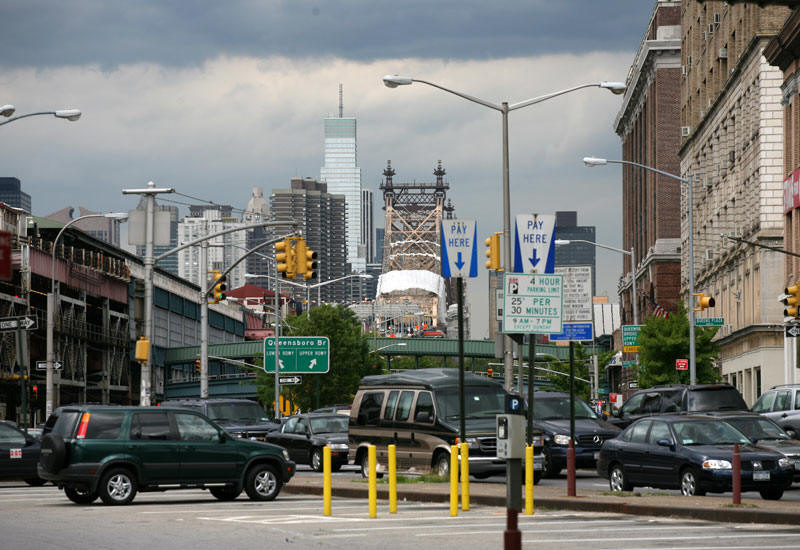


![]()
![]()
![]()

![]()
My next step is to find other variables that correlate with the AIDS in Queens. Finding these variables could quite possibly reveal way to alleviate the problem. From my initial research, it would be safe to conclude that the problem with the HIV/AIDS epidemic in Queens is most closely related to the population of African Americans. If this were true, then poverty, which is prevalent in the black community in which I reside, would also correlate to the rate of AIDS. However, as you will see, a deeper look into the social causes of the disease reveals that this problem could quite possibly correlate strongly with men who have sex with men (3) (8). My next step is to find other variables that correlate with the AIDS in Queens. Finding these variables could quite possibly reveal way to alleviate the problem.
The correlations used in this analysis are based on the Pearsonís coefficient, which aided me in determining the significance of the correlations. The analysis was conducted under a 95% confidence level or p = .05, to find the freedom value of my data I subtracted two from the number of zip codes used in my study. The freedom value is approximately 50, therefore any correlation higher than 0.273 is said to have a relationship.
Median Income
- According to my data, the area with the highest cumulative AIDS cases is East Elmhurst (11370) (Table 1). The AIDS rate for this section of Queens is 3252; It is important to understand that this number represents people who were diagnosed with AIDS in that region. Therefore, it is quite possible that this number represents people who are no longer residing in that area or no longer living. To get a more accurate set of data it was imperative that I calculated the People Living With Aids (PLWA) numbers. The PLWA number for East Elmhurst was approximately 992 cases, still making 11370 the area with the highest AIDS rate. Several factors need to be considered in relation to the high AIDS rate. The correlation between median income and the cumulative AIDS rate yielded a correlation coefficient of -0.3223934(Table 6), this indicates there is a negative correlation between median income and the AIDS rate (Figure 1); suggesting that as median income increases, the rate of AIDS decreases. The income for 11370 is 44,429, Now lets compare that to the area with the highest income. The zip code 11363 has a median income of 67,550; this area is called Little Neck. Little Neck has an AIDS Rate of 737 and a PLWA number of 27. The correlation proves to be more apparent when compared to the PLWA number as opposed to the cumulative because of the fact that the cumulative covers people who are dead or displaced. Unsurprisingly, it also has one of the lower AIDS rates. Other zip codes such as 11360, 11358 and 11357 have very low AIDS rates and have median incomes of 58,803, 51,242, and 54,910 respectively ( Table 6). Thus, my assumption hat AIDS and median income is correct.
African Americans
- Race can play a significant role in the AIDS epidemic. My data suggests that the population of African Americans goes hand in hand with the cumulative AIDS rates in queens (Table 7)(Figure2). To prove my argument I correlated the percent of African Americans in each zip code to the cumulative AIDS rates. The correlation produced a coefficient of 0.5335796. The zip code with the highest concentration of African Americans is 11412, or Jamaica queens (Table 7). This area has a 95% African American population and a cumulative AIDS rate of 1, 366. The second highest concentration of blacks is about 92%, this population occurs in the zip code 11411, also known as Cambria Heights. The interesting thing about these two numbers is the fact that despite Cambria Heights having a lower population of blacks it has an AIDS rate of 1,569, a little bigger than Jamaica. What could possibly account for this difference? Perhaps another ethnic group was causing the problem. I correlated the percentages of African Americans, Hispanic Americans, and White Americans in each zip code with the PLWA rates and the issue was clear. The correlation between Hispanics and the PLWA rates yielded a coefficient of 0.406555(Table 11)(Graph 6), whereas the coefficient for African Americans drops to .122022(Table 10). This means that there are more Hispanic Americans living with the disease and perhaps the African Americans originally diagnosed have either died or simply moved away.
White Americans
- The correlation between the cumulative AIDS rate and percent of whites in each zip code yielded a correlation coefficient of -.0771229(Table 9 ). Since the number is negative, as the percent of whites in a given zip code increases the AIDS rate decreases (Figure 7). In addition, the correlation between the percent of whites and the PLWA rates gave a coefficient of -0.20394. Although higher than the cumulative AIDS number it still shows that the white population in queens is not the problem group.
Hispanic Americans
- As mentioned earlier, the correlation coefficients for Hispanic Americans were very different when considering the PLWA numbers (Table 11). This was because there are probably more Hispanic Americans living with the disease. Since the AIDS numbers cover people who might be dead or no longer residing in a certain zip code, it failed to accurately measure the relationship between Hispanics and the AIDS rates.
In order to create a plan to combat this epidemic in my community, it is important to understand the factors that are contributing to the AIDS rate. Several variables have been considered, I have correlated the different races with both cumulative AIDS cases and PLWA cases. It seems that median income combined with high concentrations of African Americans in most of queens is the issue. Thus, to solve the problem I have identified a target group: African Americans with relatively low income.